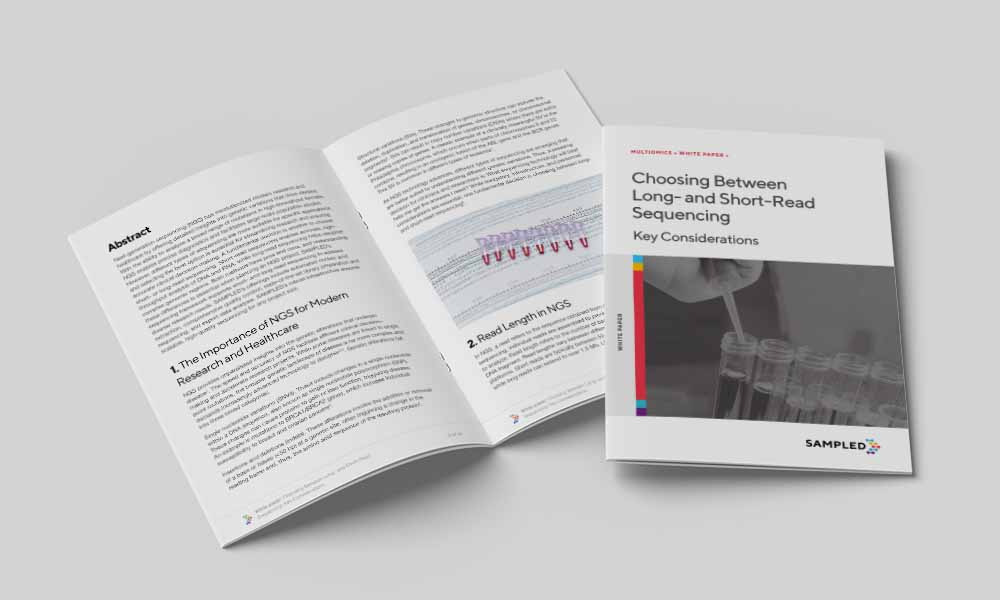Key Considerations
Next-generation sequencing (NGS) has revolutionized modern research and healthcare by offering detailed insights into genetic variations that drive disease. With the ability to analyze a broad range of mutations in high-throughput formats, NGS enables precise diagnostics and facilitates large-scale population studies. However, different types of sequencing are more suitable for specific applications, and selecting the best option is essential for streamlining research and ensuring accurate clinical decision-making.
A fundamental decision is whether to choose short- or long-read sequencing. Short-read sequencing enables accurate, high-throughput analysis of DNA and RNA, while long-read sequencing helps decipher complex genomic regions. Both methods have pros and cons, and understanding these differences is essential when planning an NGS project. SAMPLED’s sequencing framework supports short- and long-read sequencing to address diverse research needs. SAMPLED’s offerings include automated nucleic acid extraction, comprehensive quality control, state-of-the-art library preparation and sequencing, and expert data analysis. SAMPLED’s robust infrastructure ensures scalable, high-quality sequencing for any project size.


